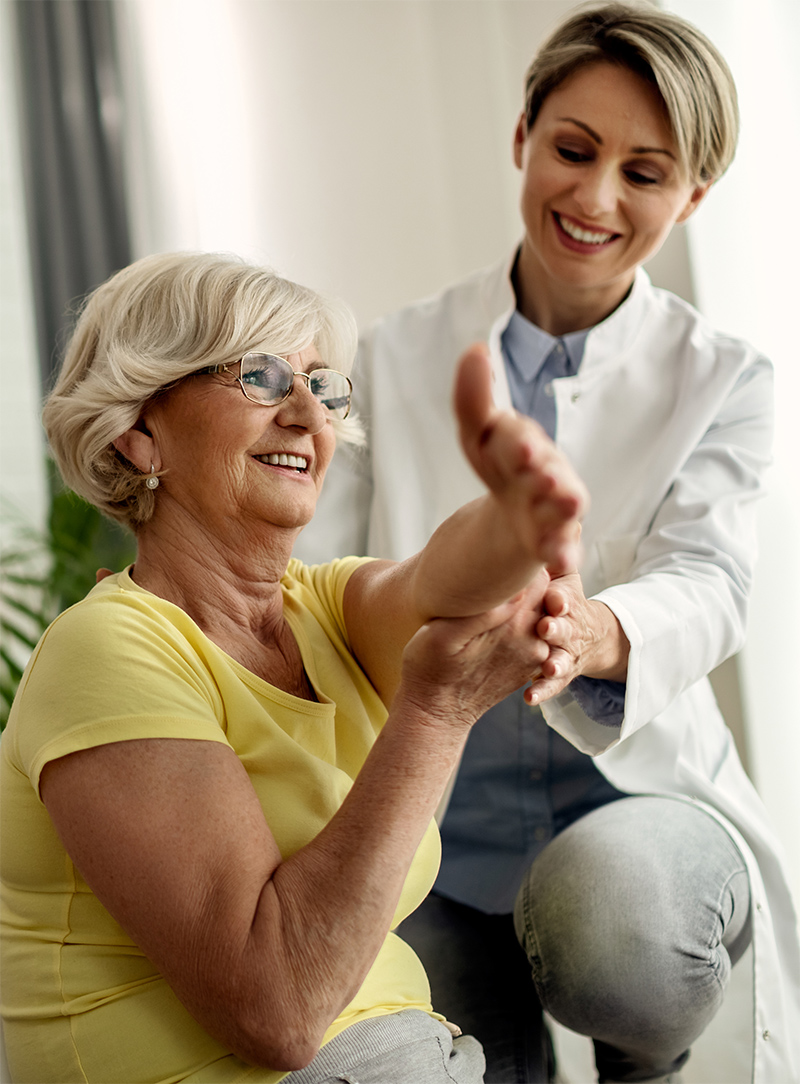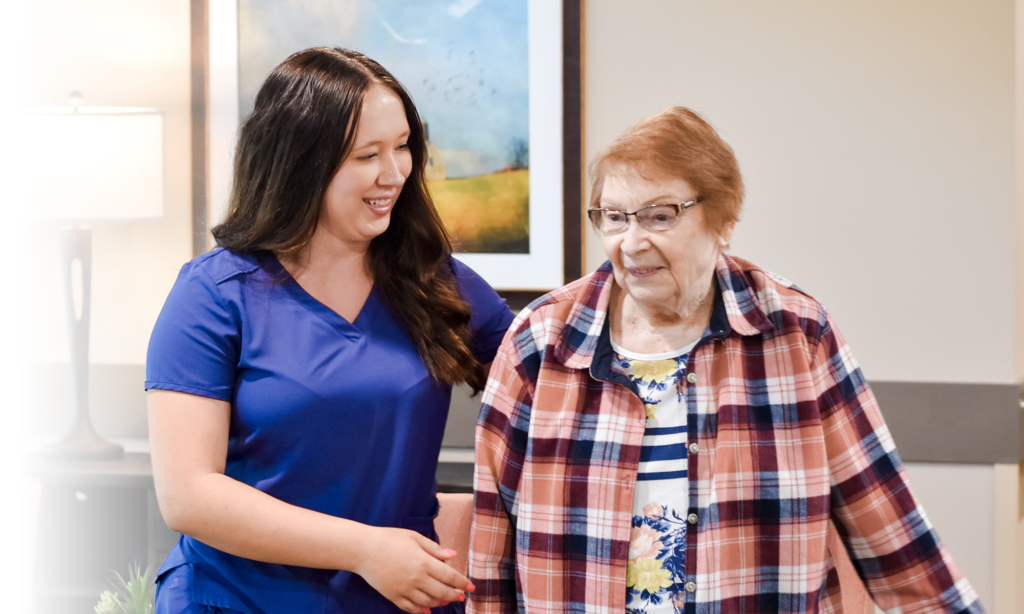
Celebrating the Hope of Outpatient Therapy!

April is Occupational Therapy Month and Parkinson’s Awareness Month. What do the two have in common? Occupational and other therapies can help those living with Parkinson’s!
Before we explain how occupational therapy can help Parkinson’s, let’s shed some light on this disease. Parkinson’s is a progressive neuromuscular disorder or a neurodegenerative disorder that results in the loss of dopamine-producing cells (neurons) in the brain. Many theories exist on why these neurons die, but no single cause exists. To put it into perspective, let’s explore what dopamine in the brain does.
Dopamine helps motor signals find their way to the cerebrum and the motor neurons in the body. If the signals get “stuck” or can’t find an open pathway, we lose motor initiation and motor control, leading to symptoms such as:
- Stooped posture
- Back rigidity
- Flexed elbows & wrists
- Tremors in legs
- Masked face
- Forward tilt of the trunk
- Reduced arm swing
- Hand tremors
- Slightly flexed hips & knees
- Shuffling, short-stepped gait
Common earliest signs of Parkinson’s:
- Fatigue
- Decreased ability to smell (which may also lead to appetite changes and weight loss)
- Constipation
- Small, cramped handwriting
- Voice changes
- Stooped posture
The early signs of Parkinson’s disease often go unrecognized. The body tries to alert you to this movement disorder for years before movement difficulties are generally even recognized, and your body compensates for these early warning signs. However, more noticeable symptoms occur as the disease progresses to the mid-to-late stages.
Four major characteristics:
- Tremors (shaking that occurs at rest)
- Stiffness in the arms, legs, and trunk
- Slow movements
- Problems with balance and a tendency to fall
Secondary symptoms:
- Reduced arm swinging when walking
- Tendency to get “stuck” when walking
- Tendency to fall forward
- Muffled, low-volume speech
- Blank facial expression
- Decreased blinking and swallowing
Lesser-known symptoms:
- Increased risk of melanoma (skin cancer)
- Flaky white or yellow scales on the skin, known as seborrheic dermatitis
- Sleep disturbances with vivid dreams
- Hallucinations
- Difficulty with visual-spatial relationships
- Problems with attention and memory
- Depression
- Anxiety
- Muscular pain
What Relief is Available?
Therapies, in general, help those who wish to maintain their independence. Occupational therapy, or OT, can help those living with Parkinson’s to learn how to complete daily tasks in a way that reduces pain and increases safety.
OT is beneficial for those trying to maintain independence while living with Parkinson’s disease because the focus is on safe movements that you need to make as you go about your day. From safely showering, dressing, and completing other hygiene-related tasks to preparing food and cleaning up your home, occupational therapy helps you learn how to keep everything you need to do throughout the day to remain healthy.
Physical therapy can also help those with Parkinson’s disease with motor control, gait and balance training, and posture. Here are some additional specialized treatments that can offer relief to those living with Parkinson’s:
LSVT BIG® and LOUD®
Since 1987, individuals have been experiencing the benefits of amplitude-based treatment developed by Dr. Lorraine Ramig called Lee Silverman Voice Treatment (LSVT LOUD). It is based on the principle of “recalibrating” the understanding of using the voice to provide for increased volume, clarity of speech, and facial expression. A specially trained speech therapist directs LSVT LOUD and follows a specific dosage for optimal results. More recently, LSVT BIG has been developed with the same principles of amplitude-based training and recalibration from LSVT LOUD, but this time to focus on the body’s overall movements. Certified physical and occupational therapists lead the participant through a one-on-one, intensive four-week program to optimize the performance of walking, balance, dressing, handwriting, and whatever other tasks are meaningful to each participant.
Parkinson Wellness Recovery (PWR!)
Parkinson Wellness Recovery (PWR!) is a model of fitness and health for life developed by Dr. Becky Farley in 2010 for individuals with Parkinson’s disease. It creates a natural flow to and from group fitness classes and skilled one-on-one therapy with a certified PWR! occupational or physical therapist to decrease symptoms of Parkinson’s disease and promote an optimal quality of life. PWR! uses four primary movements, PRW! Up, PWR! Rock, PWR! Twist and PWR! The steps that work to counteract the symptoms of stiffness, slowness of movement, incoordination, and reduced body awareness are commonly found in individuals with Parkinson’s disease. PWR! builds physical, cognitive, and emotional health through specialized delivery of service and through empowering participants to live well every day.
Rock Steady Boxing
Empowerment and hope are the keywords for Rock Steady Boxing. This one-of-a-kind program is designed to knock out the symptoms of Parkinson’s disease through a specially designed non-contact boxing program. It optimizes physical fitness and provides a non-traditional support group where participants and their care partners unite to fight against Parkinson’s disease. Whether you consider yourself an athlete or not, this program is for you!
With the help of CaringEdge’s outpatient therapy services, there is hope for those facing Parkingson’s disease or even those typical problems that can accompany aging! We can help those in need to find relief and comfort. Reach out to us today at info@caringedge.com to learn more.


